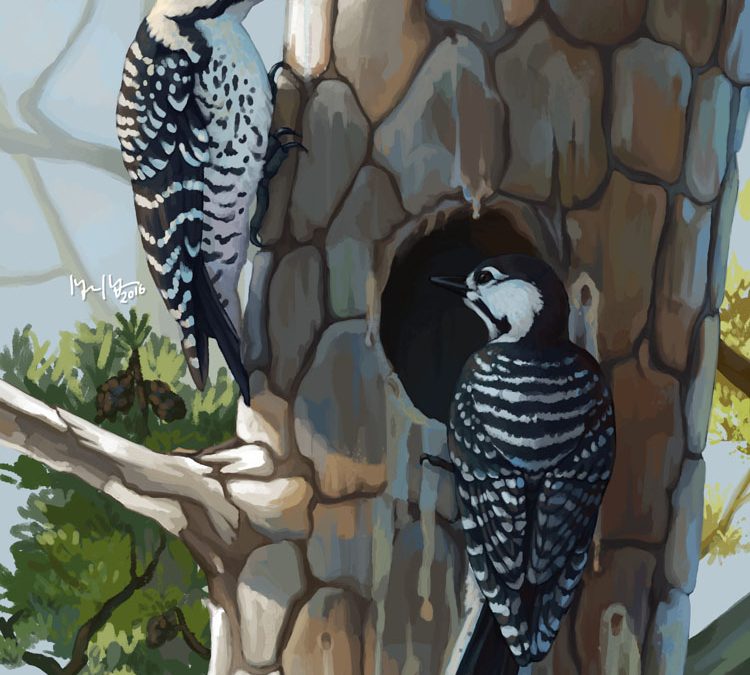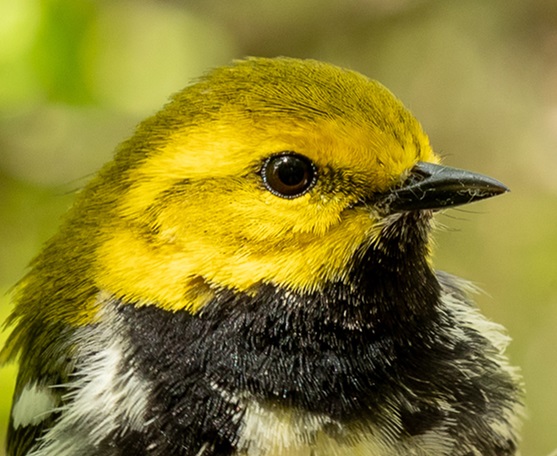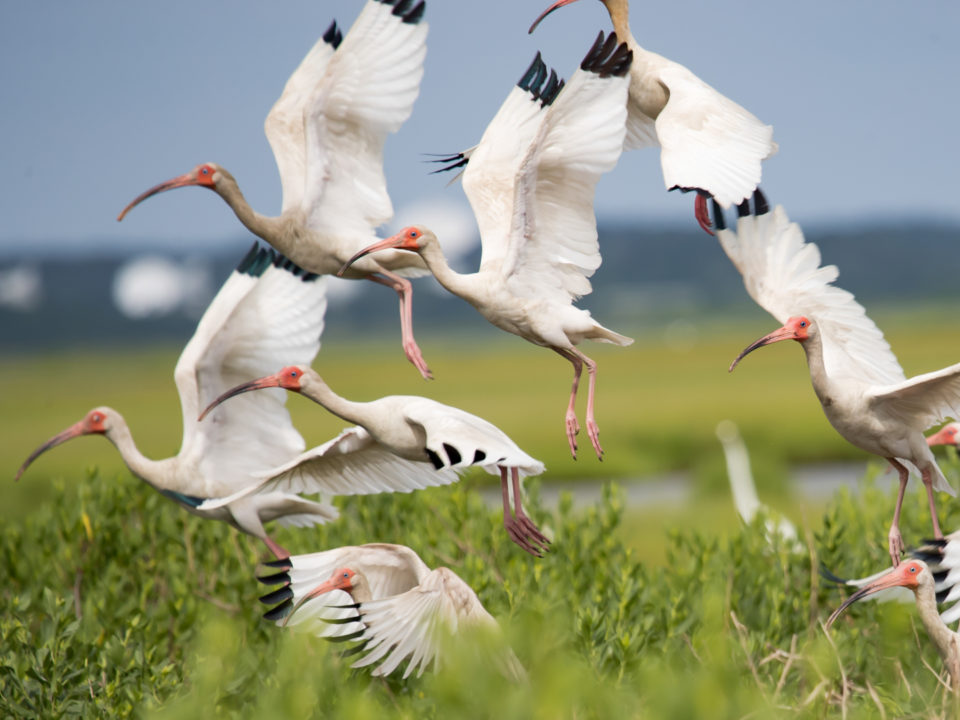A good year for woodpeckers

Networking Eagles
April 2, 2018
Georgia coast critical for migrating red knots
April 4, 2018By Bryan Watts | bdwatt@wm.edu | (757) 221-2247
April 3, 2018
2017 was a good year for red-cockaded woodpeckers in Virginia. The combined spring, breeding, and fall surveys within The Nature Conservancy’s Piney Grove Preserve (PGP) and the U.S. Fish and Wildlife Service’s Great Dismal Swamp National Wildlife Refuge (GDSNWR) identified 96 individuals during the calendar year. This is the largest number of woodpeckers known to occur in the state since the early 1980s and includes 61 resident birds, 27 birds fledged during the 2017 breeding season, and 8 birds that were moved into the state from Carolina Sandhills National Wildlife Refuge. Ongoing management efforts by The Nature Conservancy, The U.S. Fish and Wildlife Service, the Virginia Department of Game & Inland Fisheries, and The Center for Conservation Biology are increasingly pushing the population toward recovery goals.
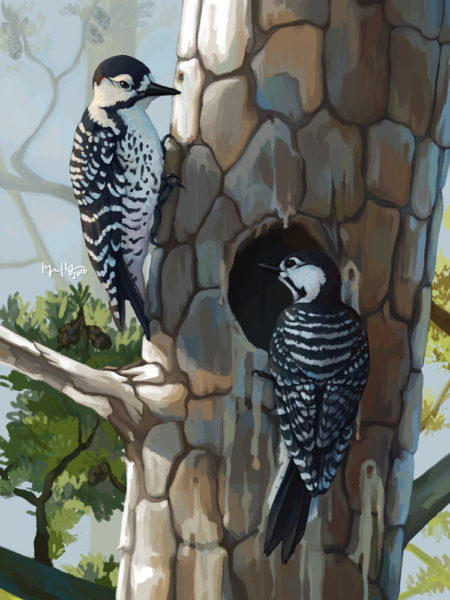
Red-cockaded woodpeckers. Painting by William & Mary undergraduate student Megan Massa.
The 2017 breeding season included 15 potential breeding groups (13 in PGP; 2 in GDSNWR) that fledged 27 young (18 females; 9 males). Fourteen of the 15 breeding groups actually made breeding attempts and 12 actually fledged young. Of 45 eggs that were followed through the breeding season, 24 (53.3%) hatched and 23 (51.1%) fledged. Seventeen (73.9%) of these fledglings were still present within the population during the winter count. Based on the results of the winter census we are hopeful that the Virginia population will support an increase in the number of potential breeding groups for the 2018 breeding season.
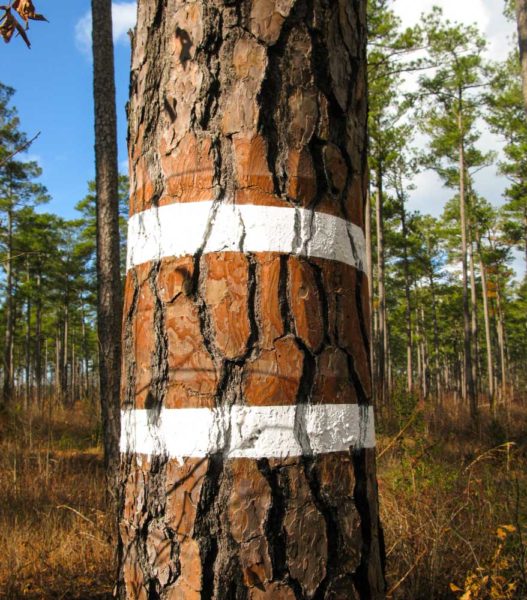
Freshly painted woodpecker cavity tree within Piney Grove Preserve. Ongoing habitat and population management within Virginia by a dedicated consortium is contributing to slow population recovery. Photo by Bryan Watts.
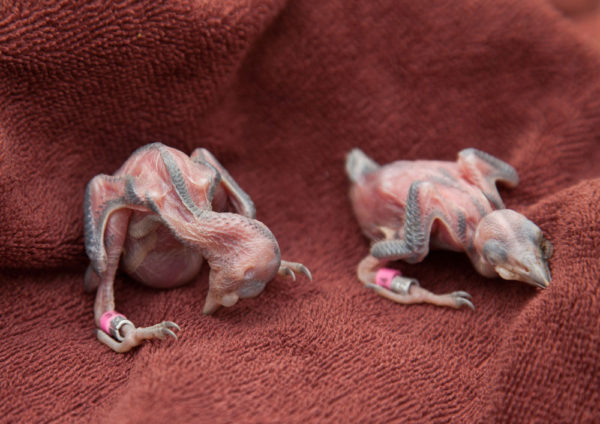
The first young woodpeckers produced in the Great Dismal Swamp National Wildlife Refuge as part of the ongoing establishment project. Photo by Bryan Watts.
Recent Reports:
Red-cockaded Woodpecker Piney Grove Preserve Report 2017
Red-cockaded Woodpecker Great Dismal Swamp, NWR Report 2017
Related posts
Two whimbrels, including an adult (foreground) that exhibits worn body plumage, especially along the scapular region, and a juvenile (background) with fresher plumage. CCB collaborated with eBird and used photographs like these to better understand differences in migration patterns between adults and juveniles at migratory stopover sites in the eastern United States. Photo credit: Macaulay Library (ML116488021)

